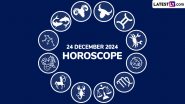In a chilling discovery, scientists have issued a warning about a 'zombie' virus that has spent an astonishing 48,500 years frozen in the Arctic, raising concerns about the potential for a deadly pandemic. Unearthed from the permafrost, this ancient virus poses a unique threat due to its resilience and the changing climate conditions that could potentially release it from its icy tomb. ‘Zombie Viruses’ Trapped in Arctic Ice May Unleash Deadly New Pandemic, Warn Scientists.
The virus in question, thought to be a type of giant virus known as a "pithovirus," was found in the Siberian permafrost. These ancient viruses are not like the typical ones we encounter, as they are larger and possess genetic material that scientists find both fascinating and potentially dangerous. The virus had remained dormant for thousands of years, preserved in the freezing temperatures of the Arctic.
Scientists studying the 'zombie' virus express concerns over its potential to reawaken and pose a threat to modern populations. The worry is grounded in the fact that our immune systems are not equipped to handle ancient pathogens, as they have evolved over millennia. Furthermore, the changing climate and the thawing of the Arctic permafrost due to global warming could provide a pathway for these dormant viruses to resurface.
The notion of a 'zombie' virus sparking a deadly pandemic may sound like a plot from a science fiction movie, but the scientific community takes this threat seriously. The fear is that if these ancient viruses are released into the environment, they could infect humans and animals, against which our immune systems are not adequately prepared. The consequences of a potential pandemic could be severe, emphasizing the need for precautionary measures and ongoing research to understand the risks involved. What Is Zombie Virus? Know All About 48,500-Year-Old Pandoravirus Yedoma, Revived by French Scientists, That Sparks Fears of Another Pandemic.
As scientists delve deeper into the study of ancient viruses and their potential risks, preventive measures become paramount. Monitoring the thawing permafrost, implementing stricter regulations for activities in the Arctic regions, and advancing research on how to counteract the effects of ancient viruses are crucial steps.
Geneticist Jean-Michel Claverie of Aix-Marseille University said, "At the moment, analyses of pandemic threats focus on diseases that might emerge in southern regions and then spread north. By contrast, little attention has been given to an outbreak that might emerge in the far north and then travel south - and that is an oversight, I believe. There are viruses up there that have the potential to infect humans and start a new disease outbreak."
(The above story first appeared on LatestLY on Jan 23, 2024 08:21 AM IST. For more news and updates on politics, world, sports, entertainment and lifestyle, log on to our website latestly.com).













 Quickly
Quickly




















